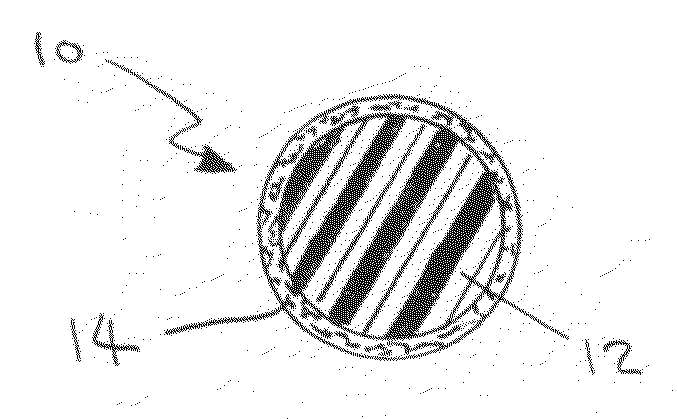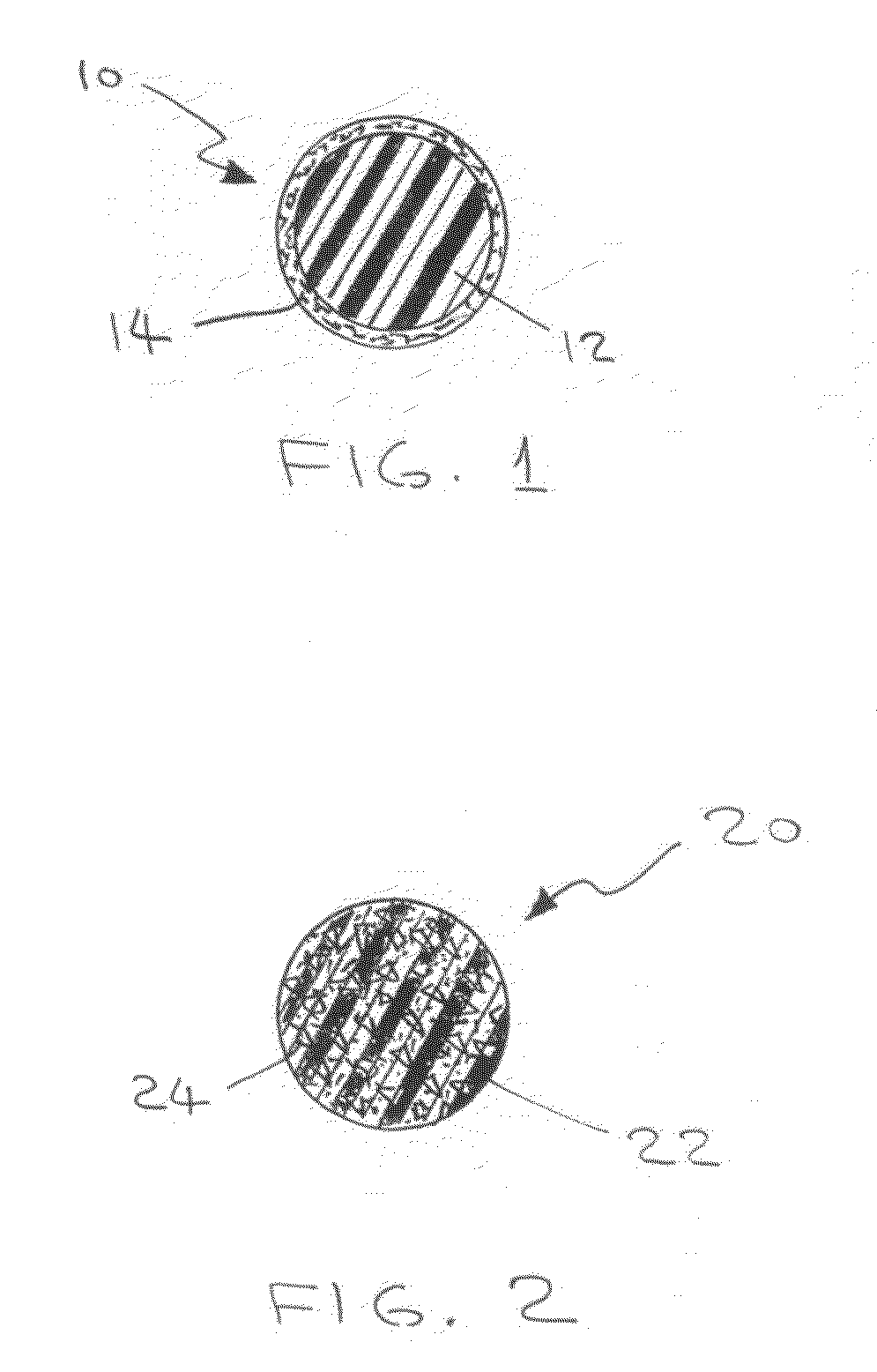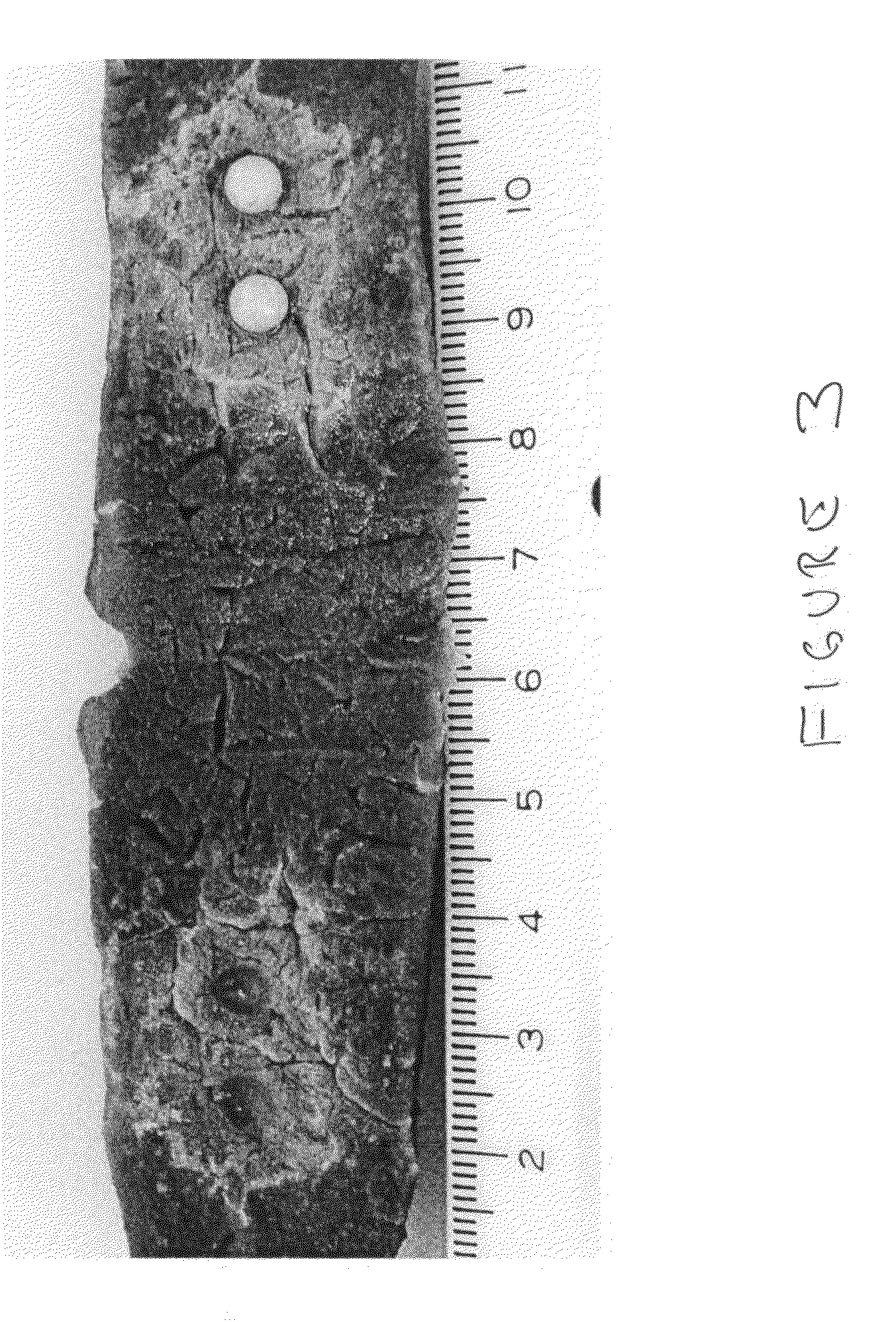Method for treating menorrhagia
a menorrhagic and inert technology, applied in the field of menorrhagic beads and inert beads, can solve the problems of substantial skill and experience, substantial risk of infection, and limited use of caustic chemicals as locally destructive agents
- Summary
- Abstract
- Description
- Claims
- Application Information
AI Technical Summary
Benefits of technology
Problems solved by technology
Method used
Image
Examples
example 1
Preparation of AgNO3 Bearing Beads
[0034]A. Preparation of Coating Solutions
[0035]Coating Solution A was prepared by dissolving about 1 gram of silver nitrate in about 4 milliliters of water and adding thereto a solution of about 0.4 grams of polyvinylpyrrolidone (K-120) in about 4 milliliters of water.
[0036]Coating Solution B was prepared by adding about 4 milliliters of 70% denatured ethanol to about 8 milliliters of Coating Solution A.
[0037]B. Coating of Beads
[0038](i) Polypropylene beads having a diameter of about 3 millimeters and perforated polystyrene beads having a diameter of about 5 millimeters were soaked in Coating Solution A for about 2 minutes, removed from the coating solution, and were dried at ambient room temperature for about 30 minutes. The perforated polystyrene beads had single, substantially cylindrical through perforation having a diameter of about 1 millimeter in each bead.
[0039](ii) Polypropylene and polystyrene beads as described in (i) above were soaked in...
example 2
Tissue Necrosis With AgNO3 Bearing Beads
[0042]Silver nitrate bearing beads prepared in Example 1 were placed on the surface of beef muscle tissue (fillet mignon). Beads without a silver nitrate coating were also placed on the tissue as negative controls, as was a crystal of pure silver nitrate (about 1 mm diameter by 3 mm length; as a positive control).
[0043]The surface of the tissue under each bead was observed at about 5 minute intervals for a total of about 15 to about 20 minutes. The degree of necrosis of the tissue under each bead was noted at each observation. The degree of necrosis was rated as follows:
slight visible pitting of the tissue surface (+); moderate pitting of tissue surface with slight blackening of the tissue (++); significant pitting with moderate blackening of the tissue (+++); severe pitting with complete blackening of the tissue (+++++); and severe pitting with complete blackening of the tissue, spreading beyond the point of contact (+++++).
TABLE 1Tissue Necr...
example 3
Tissue Necrosis With Acylonitrile-Butadiene-Styrene Beads
[0045]Two acrylonitrile-butadiene-styrene (ABS) beads (4 mm outside diameter) coated with a mixture of silver nitrate and potassium nitrate (50 mg total; AgNO3:KNO3 weight ratio 95:5) were inserted into beef muscle tissue (filet mignon). The beef muscle tissue was pre-heated to 37° C. in a warm water bath and then exposed to the coated beads for 20 minutes while at 37° C. and ambient pressure. The beads were held in direct contact with the beef muscle tissue during this time period so as to simulate the conditions in the uterine cavity. The two coated beads in the been muscle tissue were spaced about 10 millimeters apart.
[0046]After 20 minutes the beef muscle tissue was sliced open so as to reveal tissue that had been in contact with the AgNO3 bearing surface of the ABS beads. The degree of achieved necrosis is shown in FIG. 3. The radius of necrosis (light gray region) around each bead was measured to be about 10 mm, and exte...
PUM
| Property | Measurement | Unit |
|---|---|---|
| diameter | aaaaa | aaaaa |
| diameter | aaaaa | aaaaa |
| specific gravity | aaaaa | aaaaa |
Abstract
Description
Claims
Application Information
 Login to View More
Login to View More - R&D
- Intellectual Property
- Life Sciences
- Materials
- Tech Scout
- Unparalleled Data Quality
- Higher Quality Content
- 60% Fewer Hallucinations
Browse by: Latest US Patents, China's latest patents, Technical Efficacy Thesaurus, Application Domain, Technology Topic, Popular Technical Reports.
© 2025 PatSnap. All rights reserved.Legal|Privacy policy|Modern Slavery Act Transparency Statement|Sitemap|About US| Contact US: help@patsnap.com



